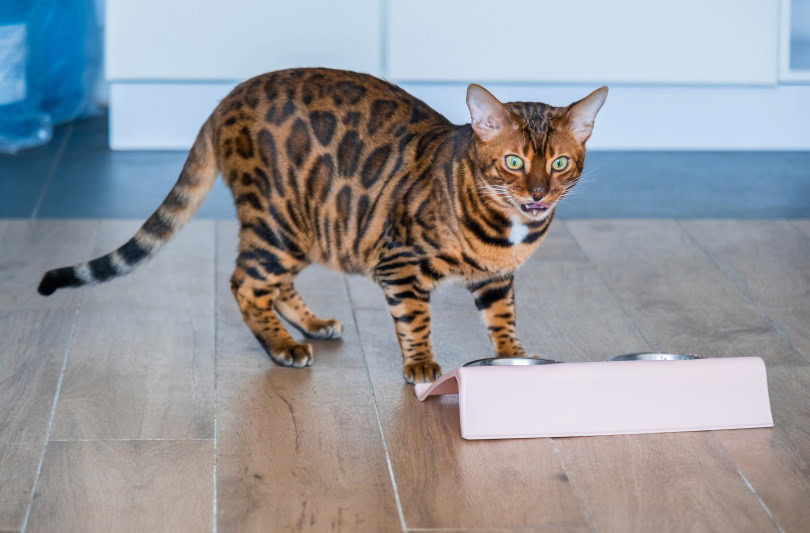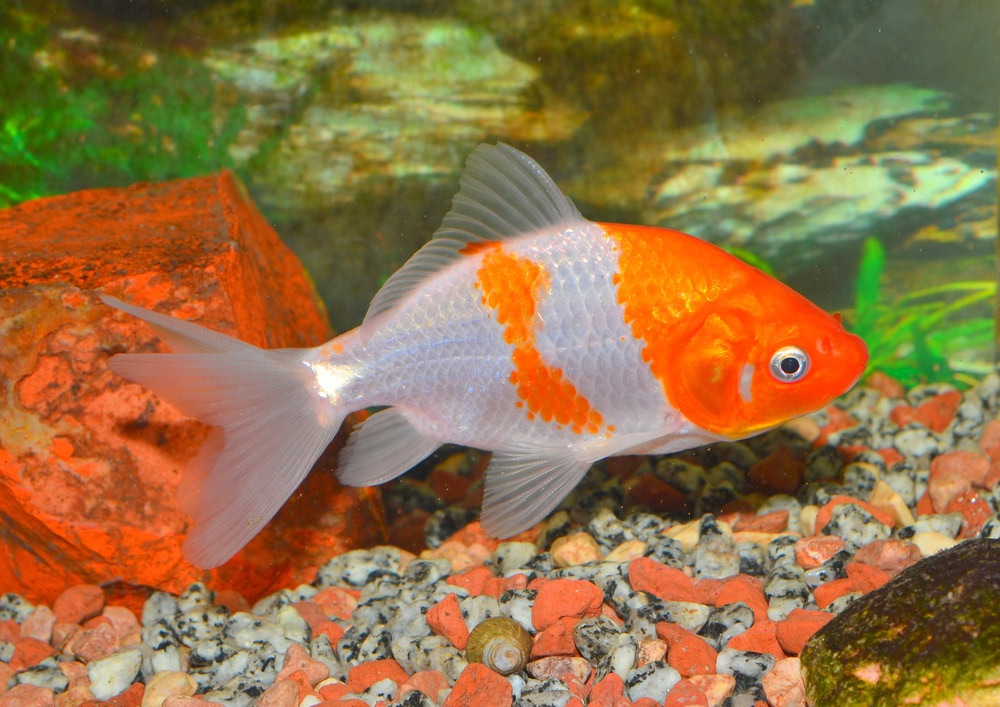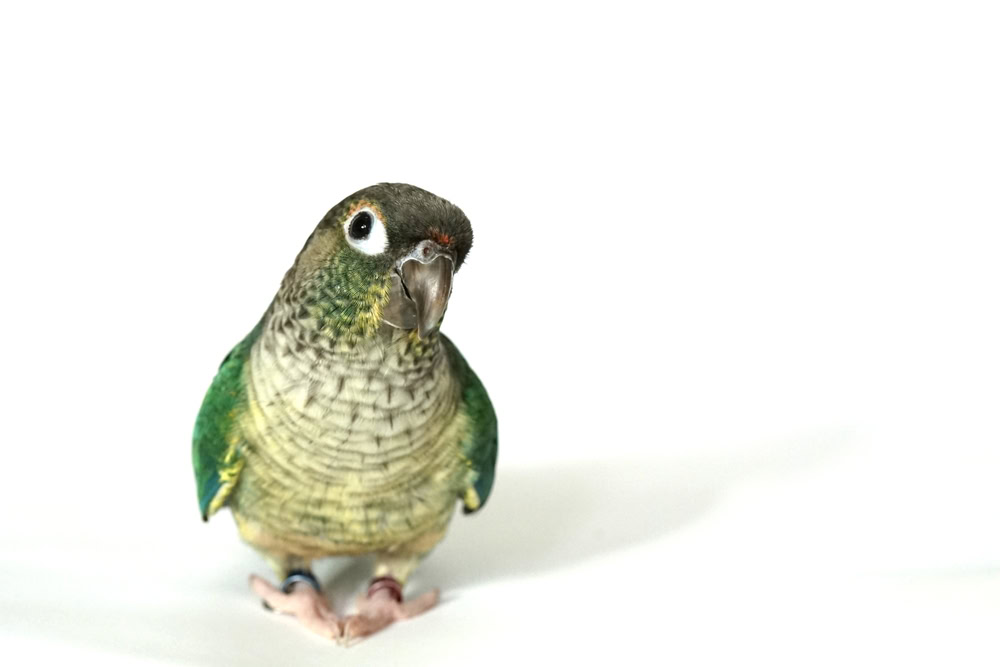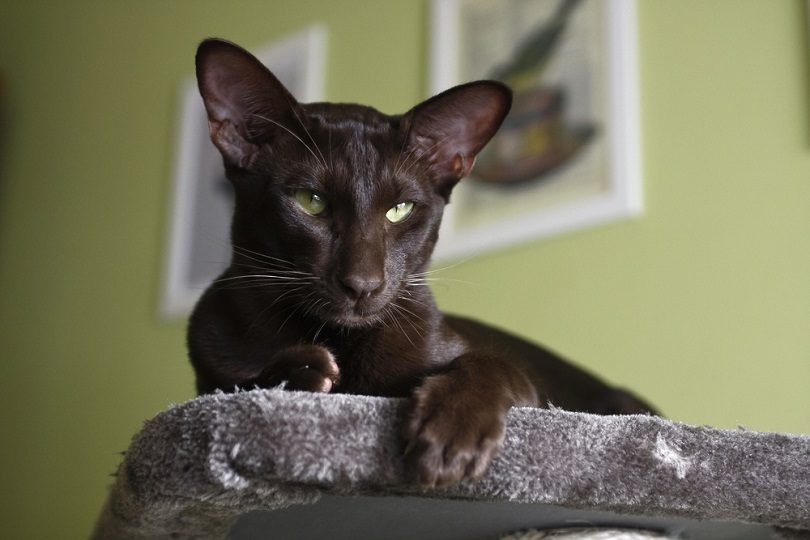VET APPROVED

The information is current and up-to-date in accordance with the latest veterinarian research.
Learn more »Click to Skip Ahead
Do you love exotic cats? If so, you will definitely want to learn more about the brown Bengal cat. This unique feline is a cross between a domesticated house cat and an Asian leopard cat. They are beautiful creatures with amazing coats that come in many different colors, including brown.
Breed Overview
Height:
13 – 16 inches
Weight:
8 – 17 lbs
Lifespan:
10 – 16 years
Colors:
Brown spotted, seal lynx point, sepia, silver, mink
Suitable for:
Experienced cat owners
Temperament:
Intelligent, energetic, playful
In this article, we will provide you with pictures of brown Bengal cats, as well as information on their history and personality traits. We will also answer some common questions about these felines. So, if you are interested in learning more about the brown Bengal cat, keep reading!
Bengal Characteristics

The Earliest Record of Bengal Cats in History
The earliest record of the Bengal cat was in 1834 when a naturalist named Edward Griffiths wrote about them in his book, A Natural History of the Fauna and Flora of Bengal. In the book, Griffiths described the Bengal cat as follows: “The Bengal Cat is somewhat larger than the domestic cat, with longer legs and a slenderer body. The head is rather small in proportion to the body and is marked with short black stripes running from the corners of the mouth to the base of each ear. The eyes are large and yellow, and the pupils are elongated vertically like those of a wildcat. The coat is short and glossy and is marked with irregular black spots or rosettes.”
As you can see, the Bengal cat has many of the same features as a leopard cat. In fact, they are often mistaken for leopards!
The Bengal Cat’s Journey to America
The Bengal cat first came to America in 1963 when Dr. Willard Centerwall imported two of them from India. He wanted to use them in a study on feline leukemia, but unfortunately, both of the cats contracted the disease and had to be euthanized. It wasn’t until 1976 that the Bengal cat was successfully introduced to the United States. This time, Jean Sousa of Millwood Cattery imported six brown spotted Bengal cats from Asia. And finally, in 1986, the Bengal cat was recognized as a domestic breed by The International Cat Association (TICA).
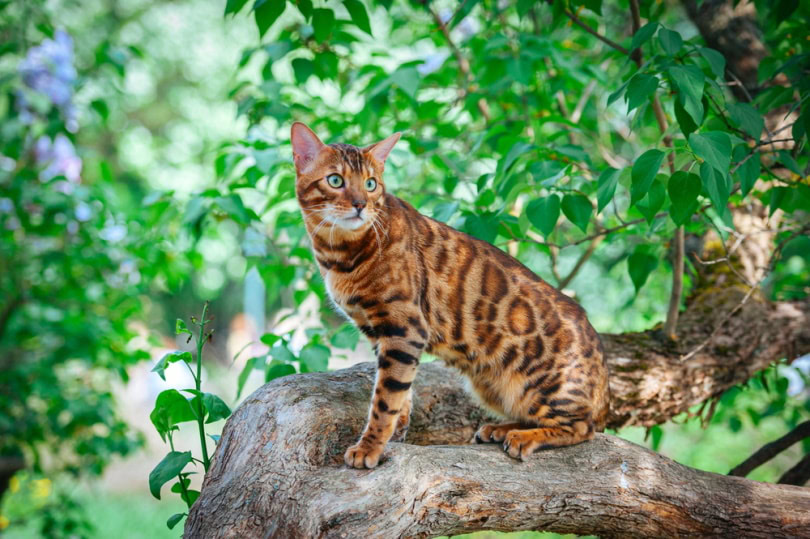
How Brown Bengal Cats Gained Popularity
In the early 1990s, several Bengal cats were featured in movies and TV shows, such as The Adventures of Milo and Otis and Star Trek: The Next Generation. This helped to increase their popularity, and today, they are one of the most popular cat breeds in the world. They’re also one of the most expensive.
But it wasn’t just their appearances on the big and small screen that made them popular. Bengal cats are also known for their intelligence, playfulness, and affectionate nature. These qualities make them great pets, and their reputation spread through word of mouth among cat enthusiasts.
Formal Recognition Status of Brown Bengal Cats
The Bengal cat was first recognized as a domestic breed by The International Cat Association (TICA) in 1986. However, this was not easy because some of the cats used to create the Bengal breed were actually wildcats. As a result, there was concern that they might pose a danger to public health and safety.
Fortunately, after much research, it was determined that Bengal cats are not a threat to people or other animals. These hybrids are only really considered Bengal Cats from the F4 generation, when they have the docile temperament typical of domestic cats.
Foundation Bengals are cats from the first three generations of crosses between Asian Leopards and domestic cats.
- F1 – specimens born from a cross between the Asian Leopard Cat and a domestic cat.
- F2 – results from the crossing between an F1 and a domestic cat.
- F3 –born from the cross between an F2 and a domestic cat.
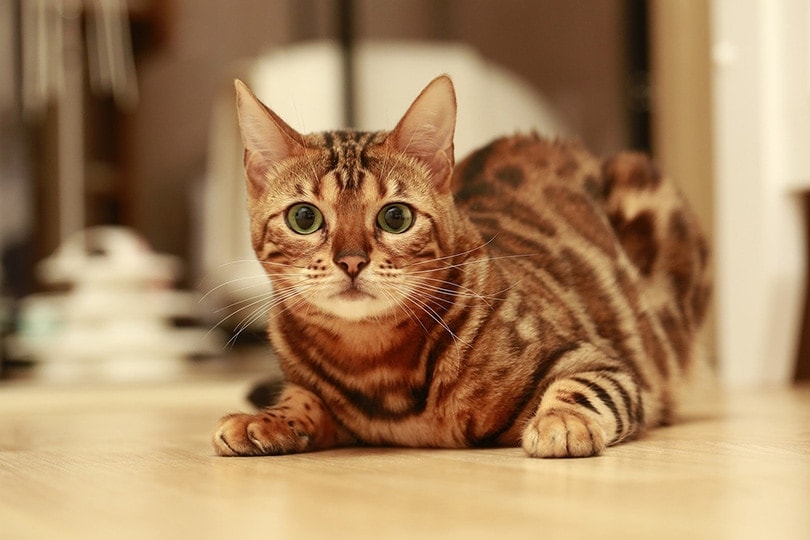

Top 3 Unique Facts About Brown Bengal Cats
Bengal cats are unique in many ways, but here are three facts that really set them apart from other breeds.
1. Bengal cats can be trained to walk on a leash, which is not something that all cats can do.
2. They are one of the only cat breeds that enjoy water. In fact, they love to play in it!
3. Bengal cats are known for their dog-like loyalty. They form strong bonds with their owners and can even be trained to do tricks.

Do Brown Bengal Cats Make Good Pets?
If you are considering adding a Bengal cat to your family, you may be wondering if they make good pets. The answer is yes! Here are some reasons why. Bengal cats are intelligent, playful, and affectionate. They are also relatively easy to train. However, there are a few things you should keep in mind before making the commitment.
Bengal cats require a lot of attention and stimulation. If they are bored or not given enough attention, they can become destructive. Secondly, Bengal cats like to climb and scratch furniture. So, if you’re not okay with your furniture getting ruined, this may not be the right breed for you.
Finally, Bengal cats can be expensive. But if you’re prepared to pay the price, you will be rewarded with a loving and loyal companion. If you think you can handle the challenges that come with owning a Bengal cat, then go for it! They make great pets and will bring joy to your life.
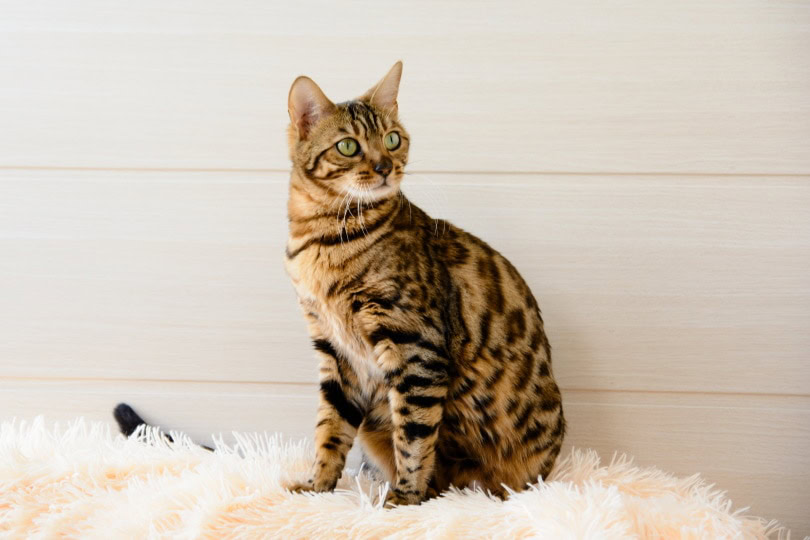
Common Question About Brown Bengal Cats
Are brown Bengal cats rare?
No, brown Bengal cats are not rare. In fact, they are one of the most popular cat breeds in the world.
Do brown Bengal cats have spots?
Yes, all Bengal cats have spots. The color and shape of the spots can vary, but they are all born with them.
What is the difference between a brown Bengal cat and a regular cat?
There are several differences between a brown Bengal cat and a regular cat. Bengal cats have shorter, exotic-looking and glittery fur. They also have unique markings on their coat that resemble those of a leopard or jaguar. Finally, Bengal cats are known for their intelligence, playfulness, and affectionate nature.
How much does a brown Bengal cat cost?
Brown Bengal cats can be expensive. The exact price depends on factors such as the breeder, the cat’s ancestry, and whether it has been spayed or neutered. However, you can expect to pay anywhere from $600 to $2,000 for a brown Bengal cat.
What do brown Bengal cats eat?
Brown Bengal cats are carnivores and require a diet that is high in protein. They should also have access to fresh water at all times. A good diet for a brown Bengal cat includes fresh food, wet food, dry food, and occasional treats.
Do brown Bengal cats get along with other animals?
Yes, brown Bengal cats can get along with other animals. However, it is important to introduce them slowly and carefully. They have a high prey drive, so you may want to avoid keeping them with smaller pets such as hamsters or guinea pigs. Bengal cats are also known for their dog-like loyalty, so they may bond more closely with one person in the family than others.
How long do brown Bengal cats live?
The average lifespan of a brown Bengal cat is 15 years. However, some have been known to live 20 years or longer.
Are brown Bengal cats good climbers?
Yes, brown Bengal cats are excellent climbers! They love to climb trees and scratching posts.
Do brown Bengal cats shed?
Yes, Bengal cats shed. Bengal shedding is usually minimal, but you may find some fur on your furniture or clothing if you have one of these pets. Brushing your cat regularly will help to reduce the amount of fur that is shed.
Are brown Bengal cats hypoallergenic?
No, brown Bengal cats are not hypoallergenic. However, they are less likely to trigger allergies than other cat breeds.
Do brown Bengal cats like water?
Some brown Bengal cats love water and will even play in the rain or jump into pools. Others prefer to avoid it altogether. If you’re not sure whether your cat likes water, it’s best to introduce them to it slowly and see how they react.

Conclusion
If you’re looking for a unique and loving companion, then a brown Bengal cat may be the perfect pet for you. These cats are beautiful, intelligent, and affectionate. They do require a lot of attention and stimulation, but they will reward you with years of companionship. It’s advanced cat ownership, but the bigger the risk, the bigger the reward, right?
Related Reads:
- Silver Bengal Cat: Facts, Origin & History (with Pictures)
- Male vs Female Bengal Cat: What’s the Difference (With Pictures)
Featured Image Credit: Photo_Olivia, Shutterstock
